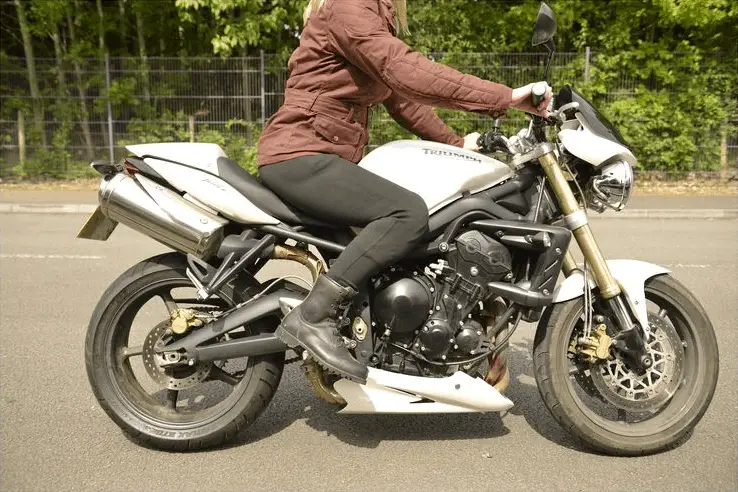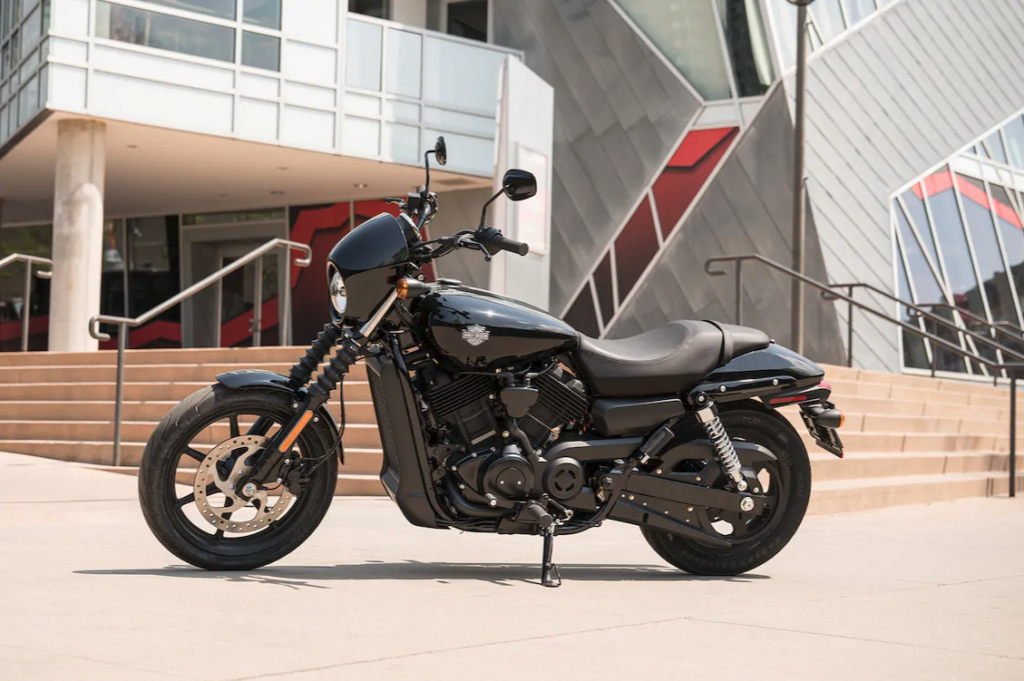A general pet peeve of many motorcycle owners is how difficult it is to carry cargo when out and about. There’s only so much you can tie to the back seat or stuff into a backpack. When evaluating a way around the problem, hooking up a trailer to the motorcycle sounds so tempting, but is it even possible?
Motorcycles can tow, but manufacturers don’t support towing. However, most motorcycles can tow around 20% of their Gross Vehicle Weight Rating (GVWR) or 50% of the curb weight. Motorcycle owners may also have to modify the vehicle’s design to safely support towing.
The rest of the article will cover all you need to know about towing with your motorcycle. We’ll also look at some of the motorcycle trailer options available to you.
How To Find Out Your Motorcycle’s Towing Capacity
Knowing how much weight your motorcycle can handle as you tow is important because getting it wrong can be dangerous for you and other road users. So, how can you figure out the ideal towing capacity for your motorcycle?
The first place to look is at your vehicle’s owner’s manual to see the recommendations. In many cases, the manual won’t mention towing. Manufacturers do this to keep you safe while also evading liability. Some of them, such as Honda, won’t encourage towing but will recommend a “load capacity” limit to give you an idea of how much extra weight your bike can realistically carry.
Although manufacturers don’t include how much weight you can tow with your motorcycle, you can figure it out with a little mathematics. You can find the towing capacity by first finding the Gross Vehicle Weight Rating (GVWR). You can typically find the information in your user manual, but it’s also listed on your bike’s information plate—typically located around the steering column.
Subtract the curb weight of your bike from the GVWR to get the total carrying weight. Once you have the total carrying weight or load capacity, subtract your weight, gear, and any extra passenger to get the towing capacity.
So, if the GVWR for your motorcycle is 1000 lbs (453.59 kg) and the bike’s weight, when fully fueled, is 500 lbs (226.80 kg), you have 500 lbs (226.80 kg) of carrying capacity. Assuming you weigh 200 lbs (90.72 kg), you have a rough towing capacity of 300 lbs 136.08 kg).
Calculating Your Towing Capacity Without an Owner’s Manual
If your motorcycle no longer has an information plate and you can’t find your owner’s manual, you can still find your GVWR with a quick search online. Enter your motorcycle model number in the query to increase your chances of getting a result.
Depending on your motorcycle model and age, you may or may not get a hit. If you don’t find a result, you can either shell out some money for a new user manual (not the most cost-effective!) or do any of the following:
- Check your local motorcycle shops. The technicians there might have informed opinions on the towing capacity of your bike model. They may also have the user manual lying around somewhere if you don’t want to take their word for it.
- Check online communities around your bike model. Ask questions about towing or the GVWR of your bike. Owners of a similar model will either provide guidance on towing capacity (if they’ve been towing with their unit) or provide you with the information in the user manual to guide your decision-making.
- Measure your bike manually. This approach is a reach, but if all else fails, you can measure your bike (with a full tank) to get its curb weight. Use double the curb weight as your GVWR, and you’re likely to arrive close to the real number. The one challenge with this method is that you may not have access to an industrial scale that can take your bike. Still, it’s an option you should know about.

What To Do When Your Motorcycle’s Manufacturer Doesn’t Support Towing
When your motorcycle’s manufacturer doesn’t support towing, you assume all responsibility for any problems arising from using the bike for this purpose. You can’t hold the manufacturer liable for any damages, and you may lose your claim to any warranty policies.
If you decide to go ahead with trying to tow with your motorcycle, it’s your responsibility to find parts and make sure you stay safe every time you’re out on the road.
You may need to become active in online communities or local biking groups near you to ensure you have access to practical information that can smoothen out the process for you. However, you need to be careful as some of the advice may be unfounded, causing you damage, loss of funds, or worse.
Types of Trailers You Can Tow on Your Motorcycle
When looking to tow with your motorcycle, you shouldn’t expect to hook up a 6000 lbs (2721. 55 kg) trailer van to your bike. It’ll fall apart immediately when you try to move, and that’s assuming you somehow find a way to hook up the trailer. The trailers you can tow with a motorcycle are compact units that can seamlessly fit on the bike without exceeding the GVWR. The top options are covered below:
Cargo Trailers
Cargo trailers are made with motorcycle owners in mind. They solve the problem of never having enough space to carry luggage on your bike, and they also come in a wide range of styles and sizes. A good example of cargo trailers in this category is the Blackhawk trailer. It has a super stylish design and weighs around 215 lbs (97.52 kg) empty.
Teardrop Trailers
Teardrop trailers are a popular option amongst adventure lovers. The trailers are typically large enough to hold a few supplies and your sleepy head when you need to relax at the end of the day. Unfortunately, most teardrop trailers in the market weigh around 500-1000 lbs (226.80-453.59 kg) which puts them in the “cutting it close” or dangerous bracket when it comes to what motorcycles can tow.
You can install one of these, but only if you can find one that matches your motorcycle’s towing capacity. Admittedly, there aren’t many options compatible with motorcycles in the market today. Businesses such as Earth Traveler have promised to bring in teardrop trailers less than 300 lbs (136.08 kg), but they’re yet to show the capacity to keep up with demand.
Bike Camper Trailers
Camper trailer manufacturers have started to put out designs made for motorcycle owners like you. A good example is Kompact Kamp’s Mini Mate Camper. It looks like a standard cargo trailer on the surface, but it transforms into a canvas tent with around 15 cubic feet (0.42 cubic meter) of space when open. Most importantly, it only weighs around 260 lbs (117.93 kg), making it easy to tow for most motorcycle models.
Pet Trailers
Your pet can’t sit on the passenger’s portion of your motorcycle, so you’ll have to make alternative provisions if you intend to carry them along on your adventures. Installing a pet trailer is one good option. Many companies make these trailers today, so you have a wide range of options to choose from. Bushtec’s Tow-Tow Trailer is one of them.
Pet trailers typically feature better ventilation and better suspension compared to standard cargo trailers, so your pets will feel a lot more comfortable in one of them. When calculating your motorcycle’s towing capacity, don’t forget to add your pet’s weight.

How To Hook Up Your Motorcycle Trailer
You need to invest in a motorcycle trailer hitch to tow with your motorcycle. Since many manufacturers don’t officially support towing with their motorcycles, they don’t produce hitches.
You have to work with third-party options to find one that best suits your motorcycle. Hitchdoc is a top name in the industry. They’ve manufactured hitches for some of the most popular bike models around today.
Alternatively, you can ride down to your local repair shop to see the options they have. If you own a popular model, there’s a high chance you can get all the parts you need.
With the hitch sorted, hooking up the trailer to your motorcycle is as simple as following the manufacturer’s instructions while using a few Allen keys and wrenches.
How To Stay Safe and Avoid Breaking the Law
You should always pay attention to local laws to ensure you’re following the most up-to-date information on motorcycle-related restrictions. If you intend to cross state lines, you should be sure to check out what the law says, depending on where you’re headed. Generally, these two laws are often commonplace regardless of state:
- Your trailer must have operable tail lights at all times.
- Your license plate has to be visible on the trailer.
Speed limits and road usage laws may also apply in different jurisdictions, so research extensively before you set out on that road trip.
Some important equipment you should have on your trailer that’s advised for safety in most states include the following:
- Powerful trailer brake lights: You need to have one of these to reduce the probability of your newly installed trailer getting broken in an accident. A vehicle ramming into your trailer can also make you lose control and veer off the road.
- Trailer safety chains: These come in the hitch set-up package. The chains keep the trailer from falling away when the hitch connection disengages accidentally. If you ride on backcountry roads, you need to ensure the chains are probably fastened. Otherwise, you could reach your destination without your trailer.
- Turn signals: If your trailer is wide enough to obscure your bike’s lights, you need to install extension signal lights to warn other road users about your movement. It’s important if you want to keep everyone safe.
- Reflectors: These help make your trailer more visible at all times. However, they’re most important for evening rides.
Before you head out, always check to ensure all your lights are working before you head out to the road. Otherwise, your trip will be punctuated by stops and maybe paying multiple fines.
Similarly, always check the hitch connection and the safety chain to ensure they’re as tight as they’re supposed to be. If they need tightening or reconnection, complete it before leaving the garage.
Other Tips To Keep in Mind When Towing With Your Motorcycle
You’ve calculated your motorcycle’s tow capacity and have finally found a trailer that allows you to stay under the GVWR while fully loaded. You’ve also connected the trailer securely and properly studied all local laws. Now, you’re raring to go on your long-planned adventures.
However, there are other things you should know:
- The added weight will affect your handling. Your motorcycle’s acceleration, braking, and turn handling will change as you add more weight to it. Therefore, it’s a good idea to get some practice with the trailer hooked up and loaded with your travel gear before you head out to the highway. Pay attention to braking because it’s often the most affected.
- Be ready to spend more money on fuel costs. Your motorcycle’s engine has to work harder to pull the extra load you’ve added to it, so you’re going to spend more money on fuel. Therefore, if you’ve switched from your truck to the motorcycle to save money on fuel consumption, the savings will get eroded as you add more weight to your bike.
- You’ll experience increased wear and tear. Even if you’ve done your best to remain below your motorcycle’s GVWR, the added weight will still cause faster wear compared to riding only the bike’s curb weight. So, as you add the trailer for towing, you should juxtapose the benefits of towing against the potential increased maintenance spend.
Final Thoughts
Motorcycles can tow, even though most manufacturers will never tell you that. The towing capacity will vary, but in many cases, you can use 20-30% of the GVWR as a safe number to aim for. We’ve covered different ways to find your motorcycle’s GVWR, so you should have no problems with finding the number.
However, before you head off to buy that trailer you’ve been coveting for a while, don’t forget to compare the downsides to towing with your motorcycle. Your maintenance costs will increase, and you may have to learn how to ride with the extra load.
